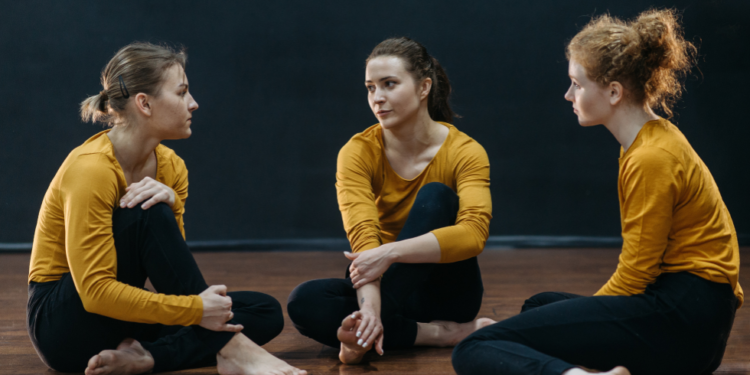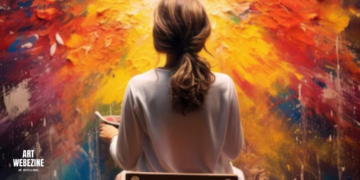Dance, often seen as a graceful art form and a source of entertainment, carries within its rhythmic movements a potential that extends far beyond the stage. It possesses the remarkable ability to be more than just a performance; it can be a catalyst for profound social change. In a world where the dance floor meets the social sphere, “Dance for Social Change” emerges as a powerful tool, igniting a movement where every step and every gesture becomes a step closer to a better society. This exploration delves into the fusion of dance and social change, showcasing the transformative potential of dance as a force for positive impact.
Explore the Historical Roots of Dance as a Form of Protest and Social Change
Throughout history, dance has proven to be a dynamic medium for expressing protest, advocating for social justice, and challenging the status quo. In many societies, dance has been employed as a non-confrontational means of protest. One striking example dates back to the early 20th century, when the suffrage movement in the United States sought to secure voting rights for women. Suffragettes creatively utilized dance as part of their campaigns. In parades and public gatherings, they employed graceful choreography to assert their presence and demand equality. The juxtaposition of elegant dance and the fight for political rights was a powerful statement that captured attention and garnered support.
One notable example from history where dance played a significant role in societal transformation is the Harlem Renaissance in the 1920s. During this period, African-American artists, musicians, and dancers used their talents to challenge racial stereotypes and assert their cultural identity. Dance forms like the Charleston and Lindy Hop became popular, breaking down racial barriers and promoting a sense of unity among diverse communities.
Another compelling historical example of dance driving societal change is the civil rights movement in the 1960s. African Americans, who were fighting against racial segregation and discrimination, often turned to dance as a means of resistance. The “Freedom Rides,” for instance, involved bus journeys through the segregated South, and participants would break into spontaneous dances at bus terminals to defy segregation laws. These dances not only showcased courage but also served as a form of peaceful protest that resonated with a broader audience, raising awareness about the injustices they faced.
Emphasize How Dance Promotes Inclusivity and Honors Cultural Diversity
Dance is a universal language that transcends borders and languages, making it a perfect tool for celebrating cultural diversity and fostering inclusivity. Across the globe, various dance forms reflect the rich tapestry of cultures. For example, the vibrant rhythms of African dance, the graceful movements of ballet, the energetic beats of hip-hop, and the traditional dances of indigenous peoples all offer unique expressions of cultural identity.
In multicultural societies, dance becomes a bridge between different communities. It allows people from diverse backgrounds to come together, appreciate each other’s traditions, and forge connections that go beyond words. Dance festivals and events often showcase a melting pot of styles, creating an atmosphere of unity and cultural exchange that can be a catalyst for social change.
Dance has the power to break down barriers and foster understanding by highlighting the similarities and shared experiences between cultures. Through movement and rhythm, dancers can communicate emotions, stories, and values that transcend language barriers. This universal language of dance not only promotes inclusivity but also encourages mutual respect and appreciation for different cultural practices. By showcasing the beauty of diversity, dance can inspire individuals to embrace cultural differences and work towards a more harmonious society.
One remarkable aspect of dance is its ability to bridge cultural gaps and foster understanding. Take, for instance, the story of the “Breaking’ Convention” in the United Kingdom. This annual hip-hop festival brings together dancers, choreographers, and enthusiasts from diverse backgrounds. It not only celebrates hip-hop culture but also serves as a platform for artists to address social issues through dance.
The “Breaking’ Convention” festival showcases performances that tackle topics such as racism, inequality, and social injustice. These performances use the universal language of dance to convey powerful messages, encouraging audiences to reflect on their own biases and preconceptions. By bringing people from different walks of life together in the spirit of dance, this festival exemplifies how dance can promote inclusivity and inspire dialogue about pressing social issues.
India’s dance tapestry is a vibrant reflection of its cultural complexity. From the classical grace of Bharatanatyam in Tamil Nadu to the exuberant beats of Bhangra in Punjab, it encapsulates regional traditions. These dances are more than mere performances; they are celebrations of India’s rich diversity. They offer a profound sense of belonging and pride to communities nationwide, uniting people through the rhythmic language of dance and weaving a colorful thread of cultural identity throughout the nation.
In Indonesia, the “Pesta Rakyat” dance festival provides a similar platform for cultural exchange. This festival features traditional and contemporary dances from various regions of the archipelago, bringing together Indonesians from diverse ethnic backgrounds. It promotes unity and understanding among different communities, fostering a sense of shared identity and promoting social harmony.
Considering Potential Challenges and Criticisms to Using Dance as a Social Change Tool

While dance is a powerful tool for social change, it is not without its challenges and criticisms. Understanding and navigating these obstacles is crucial to harnessing dance’s full potential for societal transformation.
One challenge is that dance can be seen as elitist or inaccessible to certain people. This is especially true for classical dance forms, which require years of training and discipline. However, there are many different types of dance, and there are ways to make dance more accessible to everyone, regardless of their age, ability, or background. For example, community dance programs and workshops can provide people with the opportunity to learn new dance forms and to express themselves creatively in a supportive environment.
Another challenge is that dance can be seen as frivolous or non-serious. Some people may not believe that dance can be a powerful tool for social change. However, dance has a long history of being used to promote social justice and to empower marginalized communities. For example, during the Civil Rights Movement in the United States, dance was used to raise awareness of racism and to inspire people to fight for equality.
Finally, some people may criticize dance for being too focused on aesthetics and not enough on social change. However, it is important to remember that dance can be both aesthetically pleasing and socially meaningful. In fact, beauty can be a powerful tool for social change. When people are moved by the beauty of dance, they are more likely to be open to hearing the message that the dance is trying to convey.
Here are some ways to overcome the challenges of using dance for social change:
- Make dance inclusive and welcoming. This means offering programs and initiatives that are accessible to people of all backgrounds, abilities, and experience levels. It also means creating a safe and supportive environment where people feel comfortable expressing themselves through dance.
- Be mindful of the messages that are being conveyed through dance. Avoid reinforcing negative stereotypes about particular groups of people. Instead, use dance to promote positive messages of diversity, inclusion, and social justice.
- Partner with other organizations that are working to promote social change. This can help to amplify the impact of your work and to reach a wider audience.
- Measure and evaluate the impact of your work. This will help you to identify what is working well and to make necessary adjustments.
It is important to remember that dance is not a magic bullet for social change. However, when used thoughtfully and strategically, dance can be a powerful tool for promoting positive change in the world.
Here are some examples of how dance has been used to promote social change:
- Dance has been used to raise awareness of issues such as HIV/AIDS, gender inequality, and climate change. For example, the V-Day movement uses dance to raise awareness of violence against women and girls.
- Dance has been used to promote peace and understanding between different cultures. For example, the Dancing for Peace initiative brings together people from different backgrounds to dance together and to learn about each other’s cultures.
- Dance has been used to build community and to empower people from marginalized groups. For example, the Hip Hop for Change program uses hip hop dance to teach young people about social justice issues and to develop their leadership skills.
Dance is a powerful tool for social change, and it can be used to make a positive difference in the world. If you are interested in using dance to promote social change, there are many resources available to help you get started.
Here is an example of how dance has been used to promote social change in India:
The Nari Shakti Dance Academy is not an isolated example; it is part of a global movement where dance becomes a catalyst for positive social change. Beyond the borders of India, dance has been embraced as a tool to address social issues and ignite transformation.
In the United States, for instance, organizations like “Dance for PD” use dance to improve the lives of individuals with Parkinson’s disease. This innovative program harnesses the therapeutic power of movement, enhancing physical and emotional well-being while challenging the stigma associated with the condition.
Internationally, the “One Billion Rising” campaign transcends borders, uniting people from over 200 countries through synchronized dance performances to raise awareness about violence against women. This global movement showcases the universal language of dance as a means to challenge injustice and promote gender equality.
From India to the farthest reaches of the globe, dance unites communities, empowers individuals, and amplifies voices. It transcends cultural boundaries, speaks a universal language, and dances for social change. The Nari Shakti Dance Academy stands as a beacon in a worldwide constellation of artists and organizations, all using the transformative power of dance to make a profound and lasting impact on society.
Conclusion
As the final curtain falls on our journey through the world of dance for social change, it becomes undeniably clear that the dance floor is not merely a stage but a powerful platform for transformative action. Dance, with its mesmerizing rhythms and expressive movements, transcends boundaries, conveying messages that words alone cannot encapsulate. From its historical roots as a protest tool to its role in celebrating cultural diversity, dance has continually proved itself a catalyst for profound social change. Challenges may arise, but dance’s enduring power to unite, inspire, and heal remains unshaken. It is a universal language that transcends barriers, forging connections and amplifying voices.





